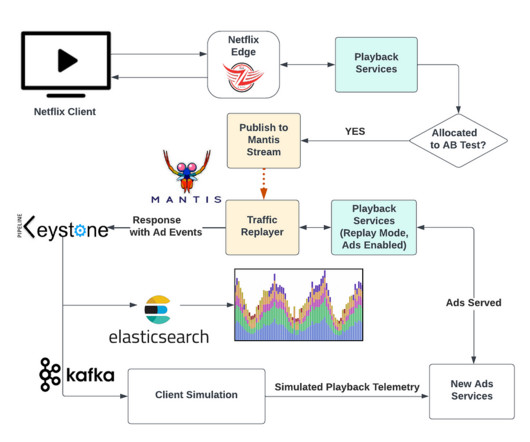Ensuring the Successful Launch of Ads on Netflix
The Netflix TechBlog
JUNE 1, 2023
This tier extended existing infrastructure by adding new backend components and a new remote call to our ads partner on the playback path. To do this, we devised a novel way to simulate the projected traffic weeks ahead of launch by building upon the traffic migration framework described here.














Let's personalize your content